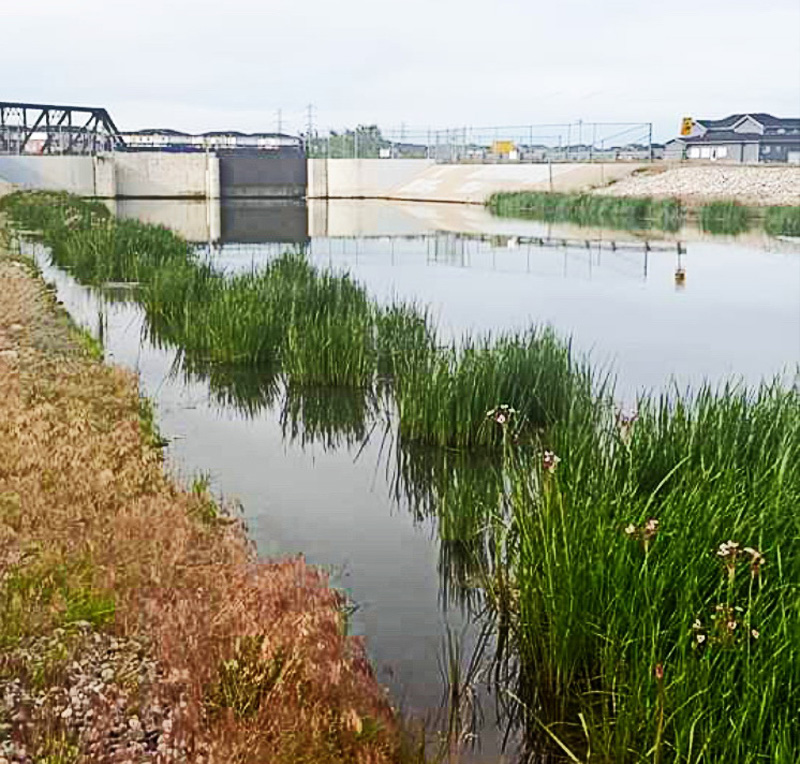
The City of Chestermere has partnered with lakefront homeowners to fight against the invasive flowering rush.
Flowering rush is an aquatic plant that aggressively spreads and grows near the shoreline.
“It gets too thick with vegetation that you wouldn’t be able to use the shoreline,” said City of Chestermere Parks Manager Rick Van Gelder.
“We’re trying to get the lakefront homeowners to let us know if they find flowering rush and where it is,” he added.
The city is responsible for the removal of anything that’s on public land, while the lakefront homeowners are responsible for the removal of flowering rush within their property line.
“We’re in partnership with them, we taught them how to remove it properly, and we provided a dump spot for them,” Van Gelder said.
The best time of year to remove flowering rush is in the fall when the water drops, but before the ground freezes.
“It’s the perfect opportunity to get in there and dig it out,” Van Gelder said.
“Now we’re monitoring where it’s coming back. We’re monitoring with the of residents to ID where it is, and see if we’re making any headway,” he added. “We want to be proactive rather than reactive.”
Flowering rush was along the river near the Calgary Zoo and entered the irrigation cannel from the Elbow River after the floods.
“It’s in parts of Calgary, and has come downstream to us,” Van Gelder said.
The Western Irrigation District (WID), has been battling against the flowering rush and trying to get rid of it.
Now, as the City of Chestermere sees the flowering rush, they are physically removing it.
Throughout the years, research and experiments have been made to find the best way to remove the plant, including divers hydrovacing the plant, and barrier mats being used to choke the plant.
“They found the best way to get rid of it is to dig it out physically,” Van Gelder said.
When the city and lakefront homeowners are digging the plant up, all of the bulbs must be collected.
“They have to be dug out, you can’t just rip the plant out, you have to get that bulb out otherwise it just multiplies,” Van Gelder said.
“What will happen is if they get busted up one of those bulbs could float downstream, drop into the silt, and start another plant,” he added.
Lakefront homeowner Heather Davies has been physically removing flowering rush with a shovel for about three years. However, it keeps growing back.
“It spreads so quickly, and it’s so invasive that if we don’t get a handle on this now, it’s going to be next to impossible to get rid of it,” Davies said.
She added, a take-over of flowering rush at Detroit Lakes was addressed using an aquatic herbicide called diquat, which had been discussed to use in Chestermere to control the weeds.
“It never moved forward, which is unfortunate. It’s safe to use in an aquatic environment, and it doesn’t harm the fish,” Davies said.
However, the municipality cannot control the flowering rush with chemicals because there are no chemicals that have been approved by the government to use near the water.
“It’s because this is an irrigation cannel. This cannel supplies water to a lot of farmers downstream from us,” Van Gelder said.
For additional information on the flowering rush, how to properly remove the plant, where to dispose of it, and how to protect Chestermere Lake from other aquatic invasive species, please visit the City of Chestermere website at https://chestermere.ca/572/Aquatic-Invasive-Species.








